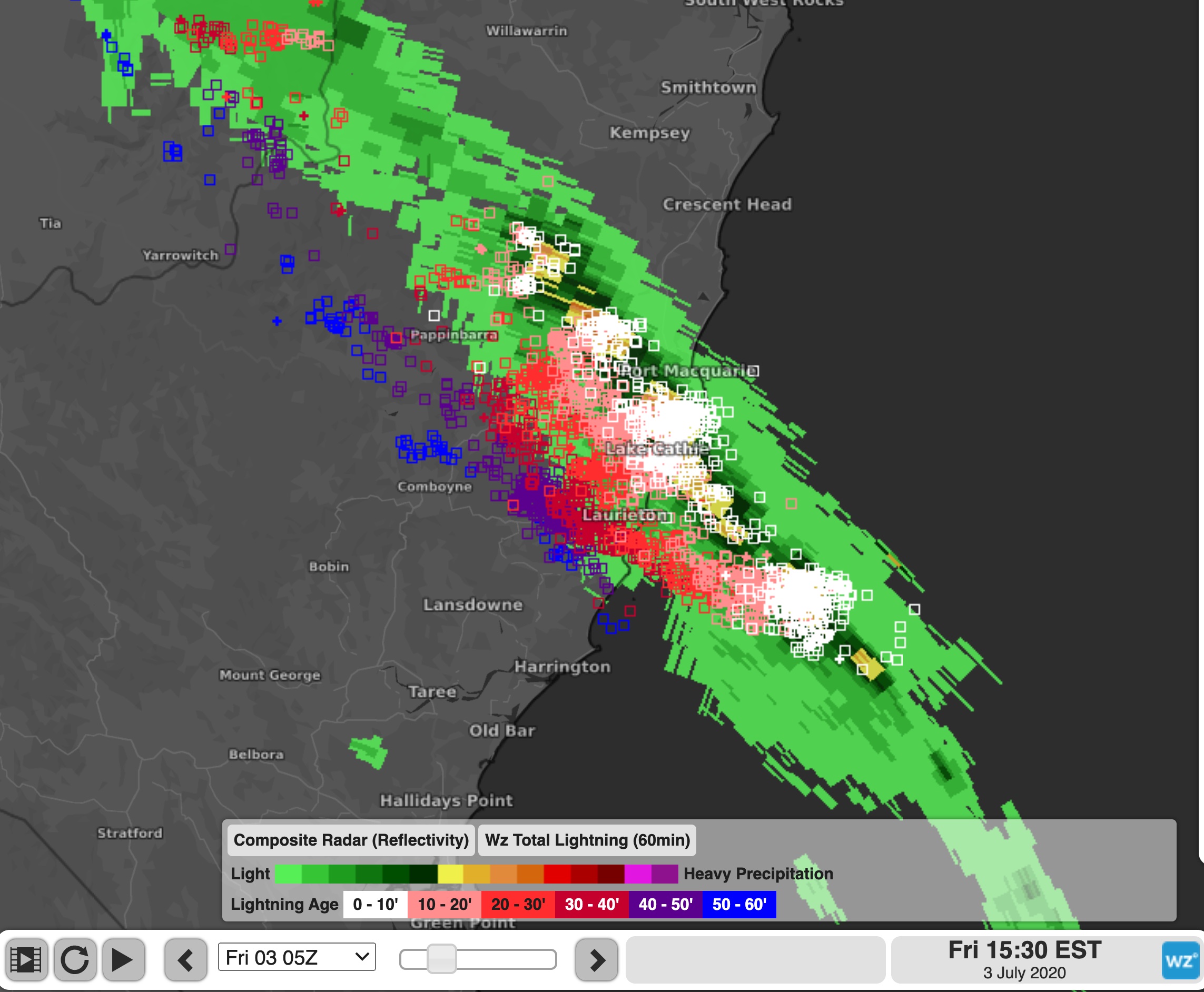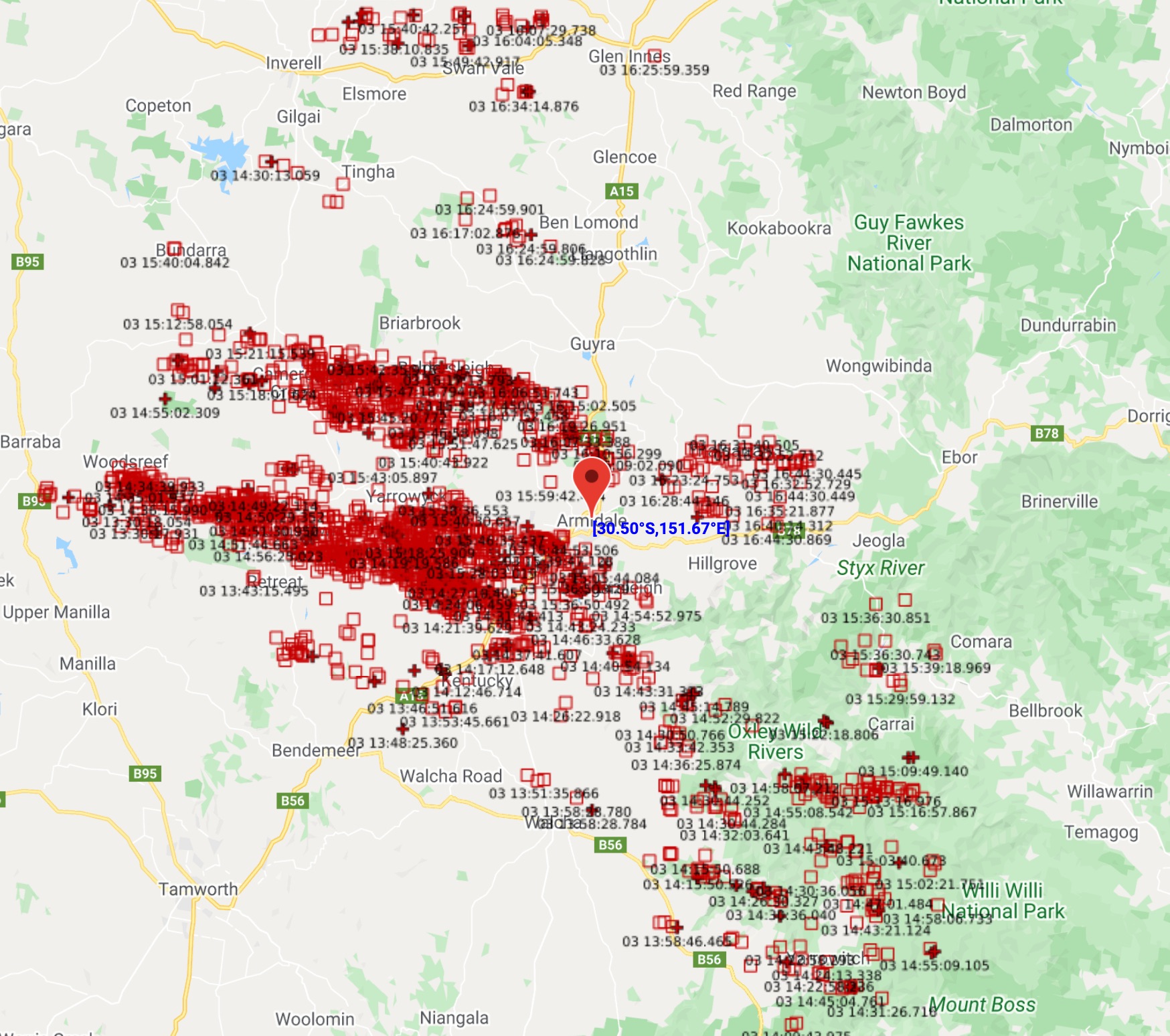Sparky skies over northeastern NSW and southern Queensland
An active trough swept over northeastern NSW and southern Queensland on Friday, providing quite the out-of-season light show.
Nearly 42,000 lightning strikes were recorded on Friday afternoon over northeastern areas of NSW and southern areas of Queensland as the gusty change made its march across the region.
One of the most active of these thunderstorms passed over Port Macquarie at around 3:30pm Friday, generating nearly 17,000 strikes within 100km. In addition to the afternoon light show, a wind gust of 67km/h blew through with the storms, dropping the temperature by over 5 degrees in 30 minutes.

Image: Lightning and radar over Port Macquarie with storms on Friday afternoon
Another set of thunderstorms passed over Armidale, bringing 12mm of welcome rainfall. However, storms dropped the temperature to just 6.8 degrees at 3pm in the afternoon, eight degrees cooler than an hour earlier. This, combined with a 61km/h wind gust, made the temperature briefly feel below zero degrees in the middle of the afternoon. About 2200 strikes were recorded within 100km, mainly to the east and northeast of the town.

Image: Map of recorded lightning strikes within 100km of Armidale on Friday
Despite the normal time of year for this region to receive thunderstorms being from mid spring to mid autumn, thunderstorms can occur at any time of year, albeit not usually as widespread and with as much lightning as experienced on Friday afternoon.
As the trough has now moved offshore, cool mornings will be left in its wake for the next few days. The next chance for some storms and rainfall will be from Wednesday for the NSW coast, as a coastal trough deepens, though it is very unlikely to produce as much lightning.